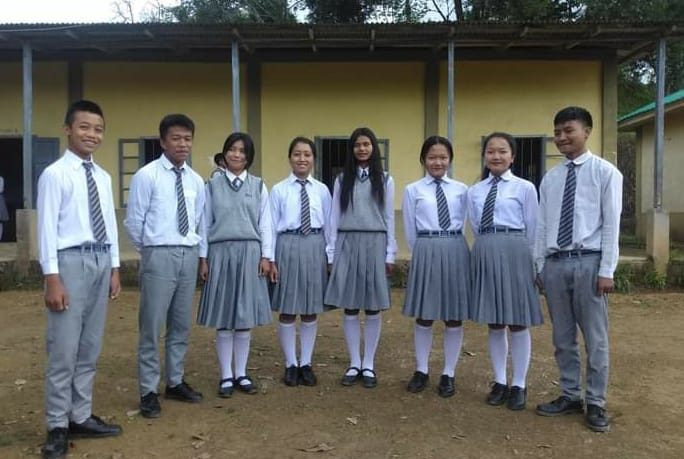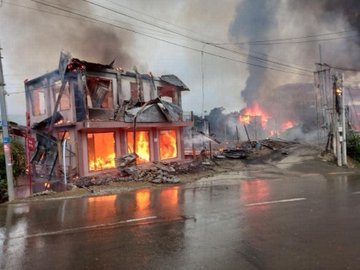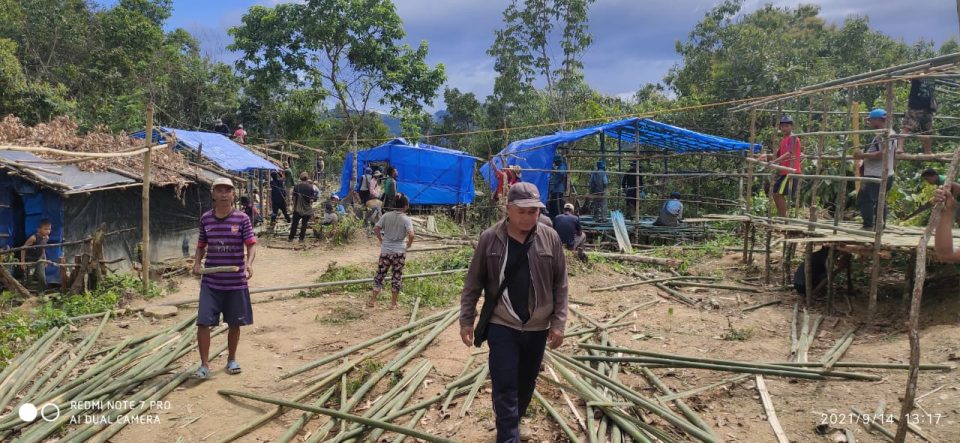
In Mizoram, Myanmar's children find refuge and school

Nestled in the rocky lap of Vanzang Hill, Tlanglo was a tranquil village in Myanmar’s chin state until the country’s military regime perceived it as a potential threat.
The village became a target as it is located on the road to Htantalan town, the headquarters of the Chin National Front (CNF), an insurgent group that has been waging war against the military regime.
In April this year, barely two months after it staged a bloodless coup, the army ordered people of Tlanglo and four other neighbouring villages not to venture out. A night curfew was also imposed in these villages.
It was then that Suihleipari (14) and his family and a group of other Tlanglo villagers decided to sneak to India, moving westward through mountainous jungle tracks.
After about 50 kilometres of trekking they reached Farkawn village in Mizoram on the India-Myanmar border.
“The day we left the village, I thought it was the end of my dream of becoming a teacher. I never thought I would ever get a chance to study again,” Suihleipari said.
Four months after his escape from Myanmar, Suihleipari was posing for a photo decked up in school uniform, seeking to rebuild his life in a different country.
Admitted on humanitarian grounds
Suihleipari is among the 340 students from Myanmar who have been enrolled in various schools in Tuipuiral area of Champhai district where physical classes have resumed recently.
In other districts, where classes are still being conducted online, refugee children from Myanmar are taking classes with their Mizo counterparts through mobile phones from their relief camps set up across bordering districts.
Their headcount is yet to be done.

The enrolment followed the Mizoram government’s August 31 directive to all district education officers and sub-divisional education officers to admit Myanmarese children in local schools.
Mizoram education minister Lalchhandama Ralte said the decision was taken “purely on humanitarian grounds” in accordance with the Right of Children to Free and Compulsory Education Act or Right to Education Act.
“Children aged between 6 and 14 years belonging to disadvantaged communities have the right to be admitted to school in a class appropriate to his or her age for completing elementary education,” says the education department’s circular sent to district officials.
“I like my new school. I am enjoying my lessons. Teachers here are very good. I would like to thank the Mizoram government for allowing us to attend schools,” Suihleipari said.
He got admission in Class 9 in Government Thanchhuma High School in Farkawn village.
PC Zirthanpuia, a teacher of the school, said that all the Myanmarese students, including Suihleipari, are “very determined to fully utilise the opportunity” they got to study again.
The refugee students are also provided books and uniform from the government, the teacher said.
Of the 340 students accommodated in different schools in 21 villages in Champhai district, 194 are enrolled in the primary section, 118 in the middle schools and 14 in the high schools. Besides 14 children are studying in the pre-primary section.
Refugees flow in
Zirthanpuia said the number of refugee students might go up in the bordering district as there has been a fresh influx from across the border following recent reports of escalation of violence in Myanmar.
Already over 20,000 refugees, including chief minister of Chin state Salai Lian Luai and over a dozen legislators, have taken shelter in bordering districts of Hnahthial, Champhai, Lunglei and Lawngtlai and other parts of Mizoram since the military junta dislodged the democratically elected government of Nobel laureate Aung San Suu Kyi on February 1.
It is difficult to ascertain the exact number as many refugees are left unrecorded as they are living with their families on this part of the border, said state planning board vice chairman H Rammawi, who is closely dealing with the refugee problem.
Lalnunpuia Changthu, a resident of Cherhlun village in Lunglei district, said there has been a fresh spurt in influx of refugees since September 10.
He said many villagers from Myanmar even came in small boats crossing Tiau river.
The Young Mizo Association (YMA) and local villagers are now constructing additional relief camps for the new entrants, Changthu said.
Fresh violence
Myanmar is witnessing a renewed spurt in violence since the National Unity Government (NUG) and the People’s Defence Forces (PDFs) called for an armed resistance to the military regime in early September.
The NUG is a shadow underground government formed by a group of elected lawmakers and members of parliament ousted in the coup. The PDFs were formed by common people as resistance groups to defend the junta’s offensives against civilians.
Many ethnic insurgent groups such as the CNF have allied with the NUG to “topple” the military regime.

The CNF’s armed wing, the Chin National Army (CNA), and the volunteers of the Chinland Defence Force (CDF) formed by civilians overran a military outpost at Chin state’s Thantlang near Myanmar’s border with India, killing 12 junta soldiers, on September 10, according to media reports in Myanmar.
Nearly all the 8,000 residents of the mountaintop town of Thantlang in Chin State have fled after junta forces retaliated with vengeance, randomly opening fire on the residential area using heavy weapons and explosives, burning down several houses, reported Burmese website, the Irrawaddy.
The clash triggered a fresh influx of refugees from Myanmar to Mizoram, prompting the state chief minister Zoramthanga to prod the Centre to provide humanitarian assistance to Myanmar nationals.
Mizoram’s lone Lok Sabha member C Lalrosanga and OSD to chief minister Rosangzuala met Union home secretary Ajay Kumar Bhalla and Intelligence Bureau (IB) director Arvind Kumar in New Delhi on September 22 to apprise them of the “humanitarian crisis” and sought aids for the refugees, according to a Mizoram government communiqué.
Urgent action needed: UN
Since the coup, more than 1,120 people have been killed, a UN human rights report said on Thursday (September 23). The report said military authorities have also arrested over 8,000 people, and at least 120 have reportedly died in custody.
Urgent action is needed to prevent the situation in Myanmar from escalating into a “full-blown conflict”, the UN High Commissioner for Human Rights Michelle Bachelet warned in her report presented at the Human Rights Council in Geneva.
“The murder of a Baptist minister and bombing of homes in Thantlang, Chin State are the latest examples of the living hell being delivered daily by junta forces against the people of Myanmar. The world needs to pay closer attention. More importantly, the world needs to act,” said UN Special Rapporteur Tom Andrews in a tweet.
Earlier a Human Rights Watch report said: “The junta has arbitrarily detained thousands of protesters, activists, journalists, lawyers, doctors and nurses. Many have been tortured, while all risk falling ill with COVID-19 in the country’s squalid and already overcrowded prisons.”
“The junta has shut down hospitals and targeted medical professionals, leading to a collapse of the health system as COVID-19 surges across the country. They have arrested journalists reporting on the crackdown, closed independent media and effectively shut down the internet and phone service after almost daily images appeared showing soldiers and police firing into peaceful crowds,” the report added.


